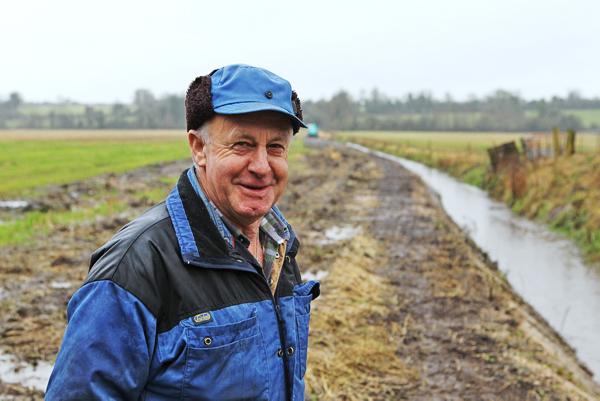Much of the flooding of farmland and towns we see happening now is arising because rivers have closed in over recent decades due to lack of maintenance, says Dessie Taaffe of Eagle Plant Hire.
He has spent his working life dealing with land drainage. Maintenance of rivers and drains used to be carried out extensively and continuously in order to reduce and even prevent flooding, he says. “The most inexpensive job that could be done in Ireland at the moment would be to clean the banks on all rivers and ditches. It would let the water away and prevent a huge amount of the damage being done to farmland and houses. The problem is that rivers have narrowed. Shores are backed up and blocked. This work used to be done, 30 years ago it was still being done, but most rivers haven’t been touched in 50 years. Any small amount of this work being done now is just cosmetic.’’
“The €80m spent by Irish Water on consultants would have cleaned most rivers in the country. A good man on a machine would clean three miles of river in a week. That’s 40 hours at €50/hour. Many rivers wouldn’t have to be done again for another 20 years.’’
Not lowering
Many rivers have closed in by 15ft on each side, he says. “The Glide River here in Co Louth has closed in significantly. The River Dee is the same – there must be 2,000 to 3,000 acres of farm land flooded by it for the same reasons.’’
Trees have gown on the sides of the banks. Those growing on the north side heel over because of wind. The banks are then pushed in. Branches fall in and get caught. A 1in branch will hold back a lot of water, a full tree even more. The water has to rise to get around it.
“What has to be done is to clean out the trees. All trees must be cut and taken out and then the banks re-cut and reshaped. You put the digger bucket in, you start at the bottom and take out a clean cut. You remove the material from the watercourse. It can be used to rebuild a bank. In most rivers there is perfect soil that can be spread over the fields and will enrich the soil. It’s all clean soil.
“Rivers used be maintained and cleaned properly in the 1950s. That work was done with drag lines. They took the stuff out and threw it on the bank. They didn’t spread it. Some slow flowing rivers were cleaned continuously. A machine would work its way down one side of a river. When it got to the bottom it would cross and work its way back up cleaning the other side. It could take six months to clean each side. There’s much better machines around now than there was 50 years ago.
“I don’t mean lowering the rivers. You’re only cleaning the banks, not the bottoms of the rivers. The bottoms of the rivers are fine. Just take out the soil and other material caught up in the banks.’’






 This is a subscriber-only article
This is a subscriber-only article





SHARING OPTIONS: